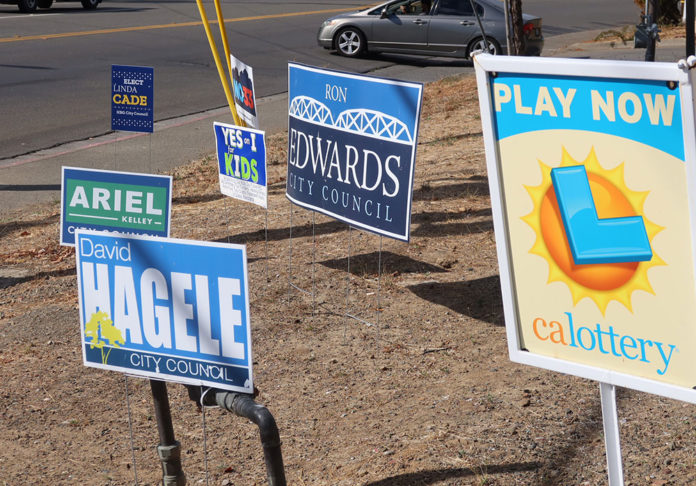Against Measure O
I am an affordable housing advocate, but Measure O and its aftermath are riddled with issues. I see it as a huge, uncertain affordability experiment, not a plan.
It will have negative impacts on hopeful residents, if the central themes of “workforce” and “middle class” housing are not realized. Proponents have provided neither plausible evidence nor requirements that developers will build workforce housing. Luxury units are more likely to be built in the downtown and adjacent areas if the City Council implements the Capacity Study’s recommendations to raise density limits to 45-65 units per acre post-election. Vacation rentals and second homes would proliferate downtown. Council disregarded City staff’s warning that land values downtown are a likely obstacle to middle-income development. Council also ignored polling results showing stiff resident concerns on downtown development.
Measure O is overwhelming in coverage. It includes the South Entry Area of 88 acres (why?), a 2-mile stretch of the Healdsburg Avenue corridor, over 50% of the Downtown Commercial District, hundreds of parcels and many very large lots that can hold 100-200 units each. Too much.
Measure O is neither well-crafted nor easily understood. Vagueness and ill-defined terms/expressions are everywhere: “encourage,” “underutilized,” “workforce,” “middle class.” Why do proponents continue to deny that the Council is likely to raise recommended density limits to 45-65 units per acre post-election? Analysis of potential consequences is woefully inadequate.
There are no annual caps on residential growth. Council has failed to disclose the fact that 970 units are already planned for the 2023-2031 housing cycle. Measure O’s undefined growth would add substantially to those 970 units—with no controls and no limits.
Healdsburg needs workforce housing, not luxury housing by default or developer preference. I would remove the South Entry Area and Downtown Area. Council should also commit to specified guardrails on affordability and annual growth.
Bruce Abramson,
Healdsburg
Fix Measure O
In the rush to put Measure O on the ballot in November, the residents were not adequately informed about how it would affect Healdsburg. Allowing for 407 dwelling units to be built in the downtown area just one block from the Plaza and where currently there are many businesses owned by and serving local residents, constitutes a major transformation in Healdsburg. A change of this magnitude should not take place without arriving at a consensus of our residents.
I am opposed to Measure O as it’s currently drafted: “To encourage creation of middle class and workforce housing on underutilized properties, should the City of Healdsburg exempt multi-family housing along certain portions of the Healdsburg Avenue corridor from the limitations of the Growth Management Ordinance (GMO)?”
“Encourage”: This has no teeth. There are no requirements or incentives for a developer to build workforce housing. We will likely end up with upscale or luxury housing, especially in the downtown area.
“Market rate” is determined by the developer. They are going to charge what they are legally entitled to charge and are highly unlikely to do us a favor by reducing the purchase price of the market rate dwelling units.
“Creation of middle class and workforce housing”: The proponents of Measure O are missing the mark here, because 80-85% of Healdsburg’s workforce is not part of the “Missing Middle” and will not be able to afford the housing requiring a minimum of $154,000 annual income.
Here are the annual incomes of several of our workforce: Police Sergeant: $112,000 – $135,000; Police Officer: $90,000 – $114,000; Fire Captain: $108,000 – $130,000; Firefighter: $88,000 – $108,000; Teacher: $69,000 – $125,000; Registered Nurse: $104,000 – $108,000.
Gail Jonas,
Brown Street
“Not the Right Solution”
Healdsburg Measure O is not the right solution to the housing needs of our city. The proposal is written so vaguely as to allow current and future City Councils virtually unlimited discretion in zoning and approving housing development. The Downtown Housing Capacity Study provides a strong indication of how that high-density housing may ultimately take shape.
Much of the Healdsburg Ave. corridor currently contains many of the retail and commercial services that the residents of Healdsburg rely upon on a daily basis. No value would be added to the community by replacing drug stores, auto parts stores, groceries, etc. with multistory, high-density condominiums or apartments.
The current Growth Management Ordinance (GMO) lays out a very precise road map for residential growth in Healdsburg. While restrictive in its annual permitting of market-rate homes, it does provide for badly needed workforce housing. As evidenced by the residential construction that has taken place since the GMO passed, Healdsburg has readily stepped forward to build considerable low-income, workforce housing—meeting our RHNA targets and earning a “Prohousing Community” designation from the State.
The people of Healdsburg are not against new housing, not when there is a defined goal and a well thought out plan, neither of which are included in Measure O. Measure O hopes to “encourage” developers to build higher-density housing on “under-utilized” properties; it is not a plan that provides the affordable, middle-income housing we need. Reject Measure O, Healdsburg, and demand better from our City government.
Charles A. Duffy
Healdsburg
Deception on Measure J
Measure J has stirred emotions in Sonoma County, but you would be hard-pressed to find those supporting animal cruelty on principle, regardless of where they stand.
When I first became aware of Measure J, my first question was, why are we doing this again? In 2018, California passed the state-wide initiative Proposition 12: the Farm Animal Confinement Initiative, which went into full effect on Jan. 1, 2024.
Measure J ads show horrific pictures and videos that reminded me of those used in 2018 for Prop 12. A quick Google search confirmed they date from 2014 to around 2018. Yet, Measure J media imply they are current atrocities, not, in reality, from 6 to 10 years ago.
Another search shows veterinarian Brenda Forsythe, featured in our voter guide and promotional ads, is not a local vet. Her practice is in Southern California, but you wouldn’t know that from the ad as she cuddles cute animals in a sunny bucolic farm yard.
And finally, why is a Sierra Club Environmental award-winning dairy being targeted and listed as a “Factory Farm” by those spearheading Measure J? They claim organizations like the Sierra Club “support policies to stop CAFOs.” Yet, the local Sierra Club’s 2024 endorsement web page does not mention Measure J, although other county measures are listed. If their claims of cruelty are true, why then are they relying on lies and propaganda to win over voters?
Look to the stated agenda and intent of the leading group supporting Measure J: DxE [Direct Action Everywhere]. Their goal is to end all animal agriculture and pet ownership to force humanity to embrace veganism. Animal welfare is being used as subterfuge to achieve this desired end.
Measure J is not about animal welfare; it’s about tyranny, and Sonoma County is their testing ground. Vote No On J.
Lilith Berkana De’ Anu
Santa Rosa
O or Not, A Vote for Heather
If Measure O passes, the benefits for middle income people will depend on who provides the vision and guardrails that O hasn’t defined.
To achieve this, we need a City Council majority that votes the right way on housing policy. Our city staff take direction from the council. The city planning commissioners, who determine land use and planning issues, are appointed by the council. Now, the current council majority encourages big business, developers, real estate associations, and prioritizes tourism over climate security. To shift to a policy that benefits more diversity and housing equity, vote for the best policy-makers – and choose carefully.
Candidate Heather Hannan-Kramer, mom of two, fits that bill. She writes, “We need a voice in City leadership that understands the hardships middle class families face in housing.” Heather is the leader who can provide that balance.
On other issues, the current council majority voted for an exception to the 2018 hotel ordinance that was intended to limit new downtown hotels to 5 rooms; then enthusiastically supported a proposed 37-bedroom, 34.5 bathroom hotel at 400 Healdsburg Avenue; and voted to weaken the Climate Mobilization Strategy—ruining grant opportunities to fund core climate tools.
The public participated in the DEI (diversity, equity and inclusion), Arts and Culture, and Climate Mobilization Strategy plans. However, Heather observes, without a change in leadership, “these robust plans will continue to be shelved or watered-down and the community voice that shaped (them) will be silenced.” Her goal is to continue a strong push for these plans to be advanced and implemented in the coming year.
Vote for a thriving, vibrant community. Check out Heather’s website at heatherforhealdsburg.com. If her priorities and vision match yours, then exercise your power and VOTE! Because, with or without O, it matters who sits on council.
Merrilyn Joyce
Healdsburg
Misleading Statements
The city’s first mailer for Measure O, produced by political strategy consultant CliffordMoss under its $62,000 contract with the city, has now been sent to Healdsburg voters. Predictably, it includes false and misleading statements.
The mailer says Healdsburg’s “downtown core, defined as the area around the plaza and one block in each direction, is excluded from” Measure O and “will continue to be subject to the GMO if Measure O passes.” This statement is false because its definition of the downtown core contradicts guidelines the City Council incorporated into the zoning code in 2018, which state that the downtown core is defined by “Piper Street to the north”—that is, north two blocks from the plaza. The city’s General Plan prohibits the mailer’s self-serving redefinition of the downtown core. The truth is that Measure O includes a large swath of the downtown core north of the plaza.
The mailer also says: “All development in the entire city must continue to comply with City zoning rules,” and “Measure O does not change any zoning regulations” and will not change “Healdsburg’s existing community character.” These statements are misleading because they fail to disclose the City Council’s intent to change zoning rules to increase density limits in the downtown zoning districts if Measure O passes. Measure O is just the first of two planned steps that would substantially increase the amount of luxury and higher-density housing downtown and fundamentally change its existing character.
California law requires the mailer to stick to a “fair representation of facts.” It fails to meet that standard and thus violates the law prohibiting the city from spending public funds on partisan campaign activity.
Beware of the city’s forthcoming second mailer.
Jon Eisenberg,
Tucker Street
Send Letters of 300 words or fewer to editor@healdsburgtribune.com.










Vote NO on Measure O
This measure is an outrage…..it has nothing at all to do with proper housing for the proper housing need….it is entirely about large developers seeing very large dollar signs and the City seeing huge developer fees driven by a Measure O business model that will actually drive housing costs UP!…..Follow the money…….Know the facts….
It was shocking and quite disappointing to see the pro Measure O mailer the City sent under the guise of an “Election Guide”. This is clearly illegal election interference under election law…..and they know it. The City should cease and desist any plans for further mailers.
Don’t let government control you with extremely poorly crafted plans that will result in an outcome the opposite of what is needed. Measure O is a wolf in sheep’s clothing…..
Vote NO on Measure O……
Thank you Mike Hill for stating so clearly why I voted No on O.